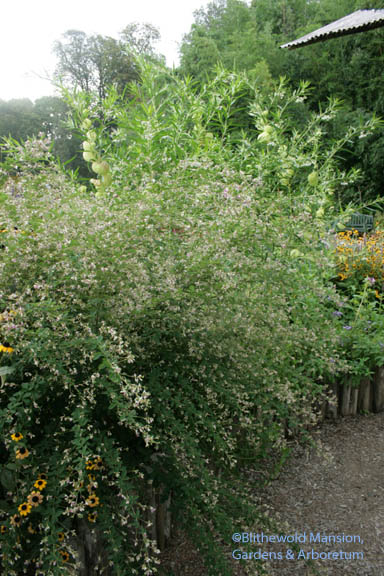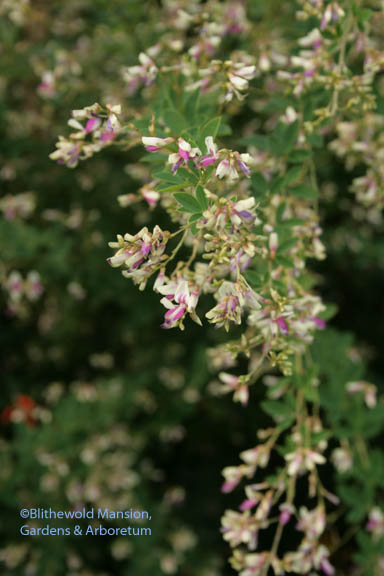After the storm – a lespedeza
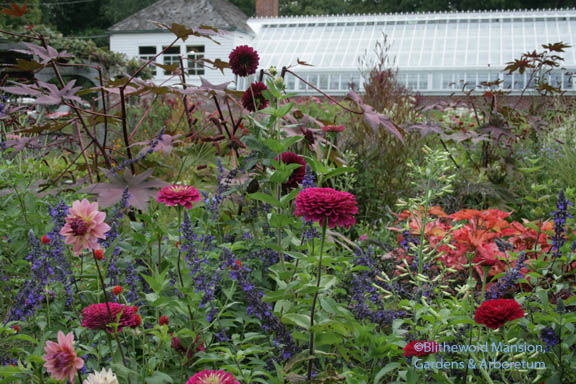 By now you probably know that Hurricane Earl gave us a miss. The wolf at the door turned out to be a tiny puppy who made a scritching sound just like crickets in the middle of the night. When we came in the next day to check for “damage” and to un-batten the hatches, we found the gardens looking refreshed and perfectly lovely.
By now you probably know that Hurricane Earl gave us a miss. The wolf at the door turned out to be a tiny puppy who made a scritching sound just like crickets in the middle of the night. When we came in the next day to check for “damage” and to un-batten the hatches, we found the gardens looking refreshed and perfectly lovely. 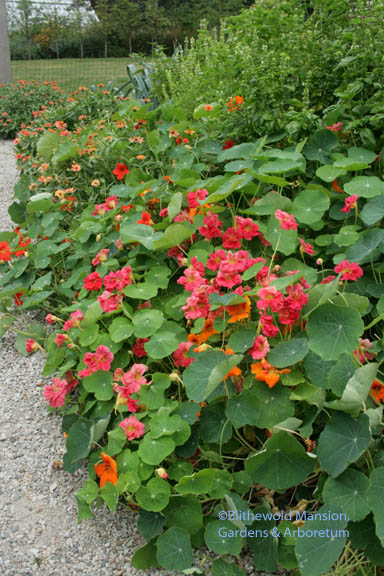 We certainly needed the rain (Earl dropped an inch and a little) and were desperate for a temperature change. I think all of the gardeners on the eastern seaboard could be thanked for fending off a potentially terrible storm because we so diligently prepared for it. Turns out that bringing potted plants inside, staking the tall plants and cutting back the brittle ones is just like lugging rain gear on a hiking trip: insurance that it won’t have been necessary. (We’re accepting thank you cards and gifts.)
We certainly needed the rain (Earl dropped an inch and a little) and were desperate for a temperature change. I think all of the gardeners on the eastern seaboard could be thanked for fending off a potentially terrible storm because we so diligently prepared for it. Turns out that bringing potted plants inside, staking the tall plants and cutting back the brittle ones is just like lugging rain gear on a hiking trip: insurance that it won’t have been necessary. (We’re accepting thank you cards and gifts.)
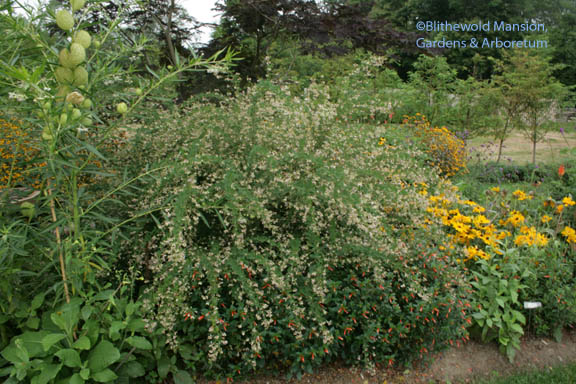 Now that the weather has broken, I’m noticing all sorts of new (and old) blooms in the gardens and visitors are too. The most asked about plant in the Display Garden this week has been the bush clover, Lespedeza thunbergii ‘Edo Shibori’. I’ve been surprised by the questions because my eye tends to pass right over this plant. This cultivar has tiny white blooms with a pink stripe that, to me, register as beige from a distance. I actually don’t think it’s very handsome at all. But it hums! Any plant that has its own soundtrack is certainly remarkable and worth another look – or listen. Bumblebees (more than any other kind of bee) can’t seem to get enough of the tiny pea blossoms. The more I think I don’t like the plant, the more I find I do. (Is that a gardener thing or just me?)
Now that the weather has broken, I’m noticing all sorts of new (and old) blooms in the gardens and visitors are too. The most asked about plant in the Display Garden this week has been the bush clover, Lespedeza thunbergii ‘Edo Shibori’. I’ve been surprised by the questions because my eye tends to pass right over this plant. This cultivar has tiny white blooms with a pink stripe that, to me, register as beige from a distance. I actually don’t think it’s very handsome at all. But it hums! Any plant that has its own soundtrack is certainly remarkable and worth another look – or listen. Bumblebees (more than any other kind of bee) can’t seem to get enough of the tiny pea blossoms. The more I think I don’t like the plant, the more I find I do. (Is that a gardener thing or just me?)
Bush clovers bloom in late summer to fall – most are a pretty pinkish-purplish – on new wood. What that means for the gardener is that even if it doesn’t completely die back in the winter (which lespedeza tend to do in this neck of the woods), they can be cut back hard (within inches of the ground like a buddleia) to maintain a graceful hoop-skirt shape. Like any belle of the ball, they don’t want to be crushed into the backseat and don’t look as graceful crowded. Best to give it room to flounce and show off. They like well-drained soil (who doesn’t) and don’t bat an eye at drought. They don’t even need – or want to be fed. – Plants in the legume family are generally able to fend for themselves. Sweet peas excepted, of course.
Do you have a lespedeza? Do the bees love it? Do you? (And do you whack it back or let it go?)

